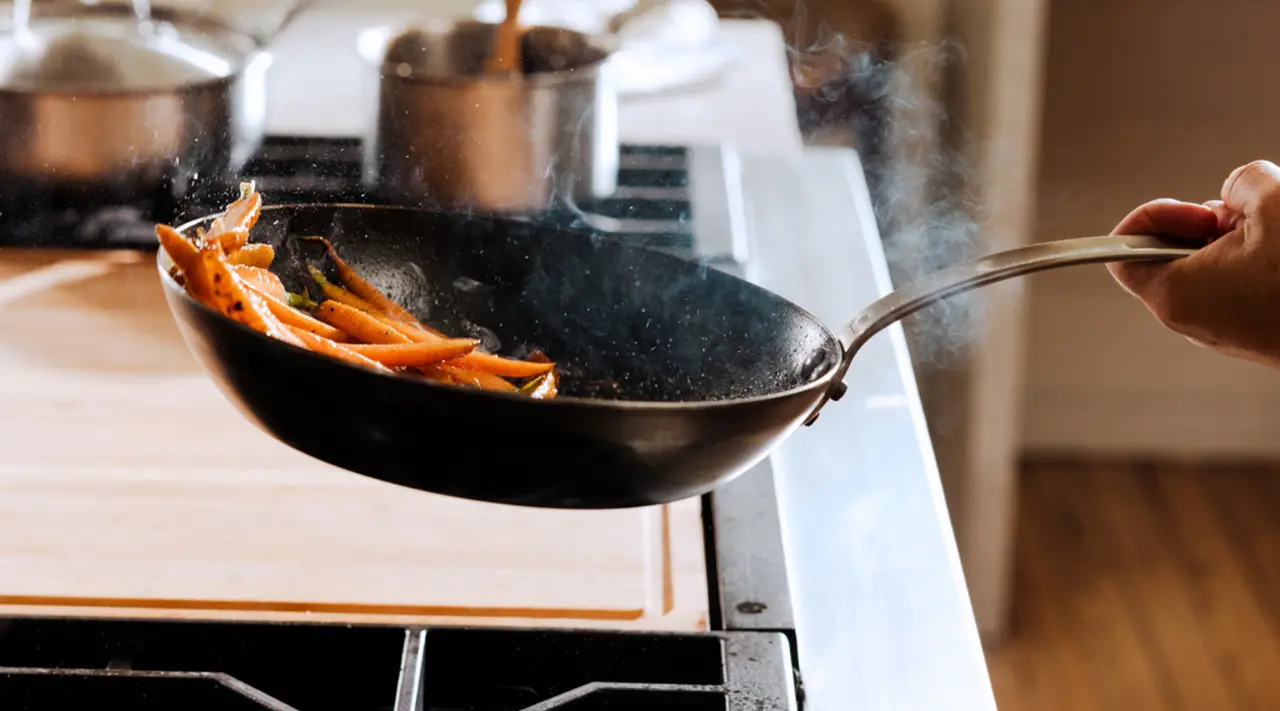If you’ve never cooked with carbon steel cookware before, it can seem daunting at the start. But learn a few key techniques and, with a little practice, you’ll soon be a pro at cooking with carbon steel.
Carbon steel cookware offers a lot of advantages, and we’ll be highlighting a few big ones: a naturally non stick cooking surface free from harmful chemicals; superior heat conduction; and the ability to cook on multiple types of cooking surfaces, from induction to campfire. Before you begin your carbon steel journey, take a few minutes to read about the ins and outs of how to cook with carbon steel.
What Is Carbon Steel?

Carbon steel is made from a blend of iron and carbon, stamped into a thin disc that’s half the weight of cast iron. This means a carbon steel pan has the control and cooking speed of stainless steel, plus the non stick properties and heat retention of cast iron. It’s all wrapped up in a lightweight package.
Similar to cast iron, carbon steel goes through a seasoning process to render its surface non stick. Once you’ve cooked with it for a while (especially fattier foods like steak or bacon which helps build non-stick seasoning layers), you can even cook delicate foods, like eggs and fish, on a carbon steel surface.
Why We Love Carbon Steel
Professional chefs especially prize carbon steel for its ability to withstand high heat—up to 1200F (!)—while still responding quickly to changes in temperature. This offers precision and control when, for example, searing a steak and dropping the temperature to more slowly cook the inside.
Carbon steel can also seamlessly transition from stove to oven to open flame, making it incredibly versatile and easy to use no matter where you're cooking. Perhaps most importantly, a well-seasoned carbon steel skillet offers a non stick cooking surface without the use of a chemical coating like you’d find in non stick cookware. And it does it all in a lightweight, easily maneuverable package.
Cooking Techniques with Carbon Steel
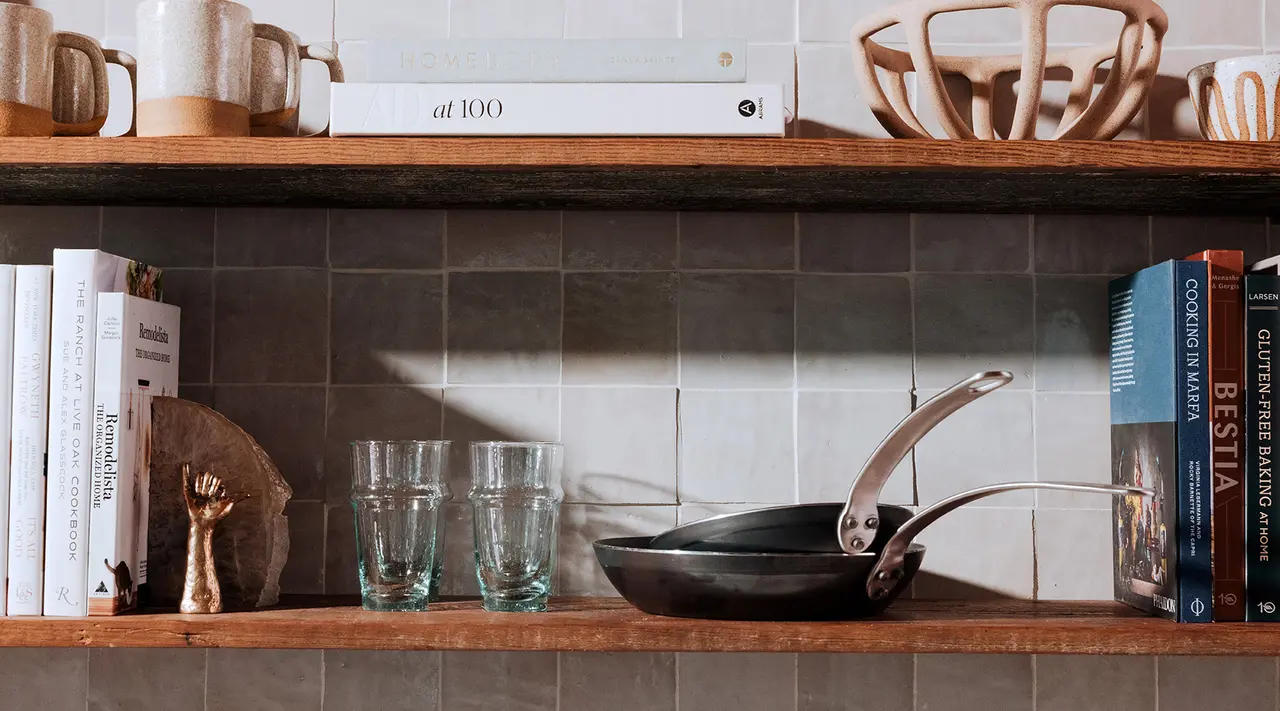
Due to its durability and ability to handle a wide range of temperatures, carbon steel offers many opportunities for various cooking styles.
Frying
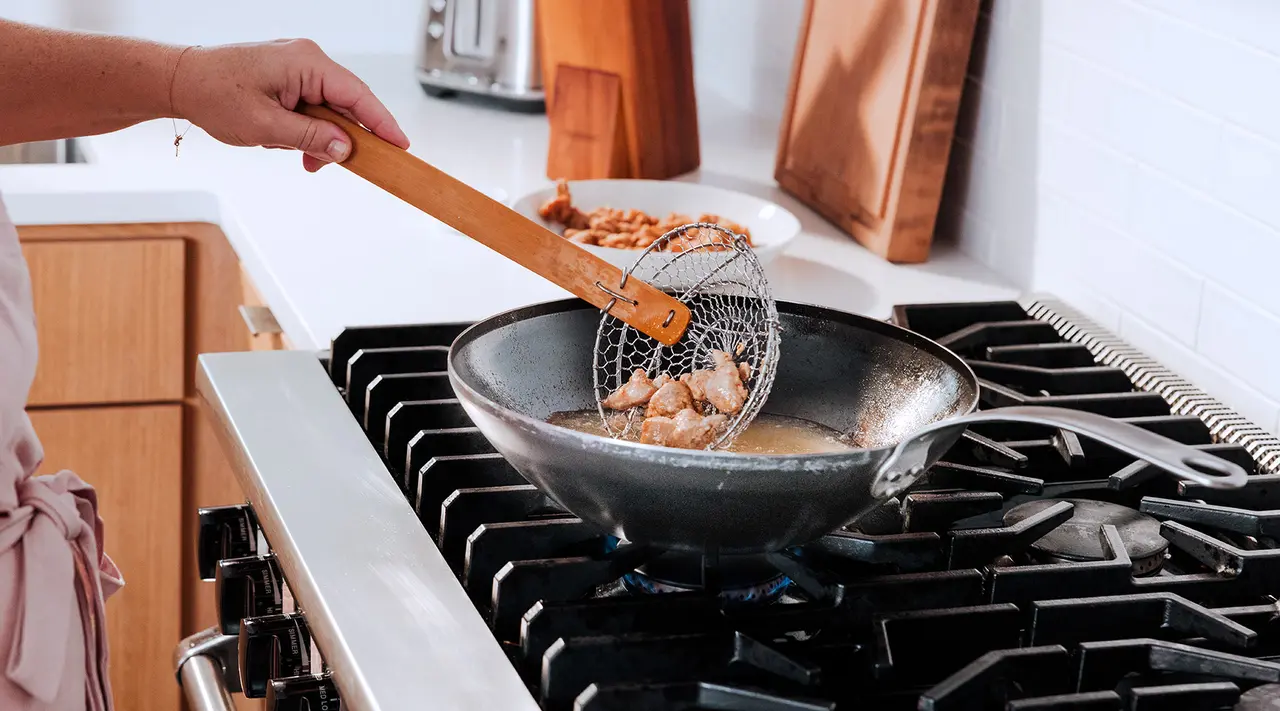
Carbon is well suited for all types of frying, from shallow- and deep-frying to pan-frying. Pan-frying in a carbon steel skillet, with its even heat retention, gives you crispy, golden brown perfection for a variety of proteins (hello, perfectly cooked cutlets!)
When frying, it’s especially important to take a step back and let your food cook without disturbance. Once a protein is ready to be turned, it will release from the pan and you'll be able to easily flip it with a spatula.
Grilling and Outdoor Cooking
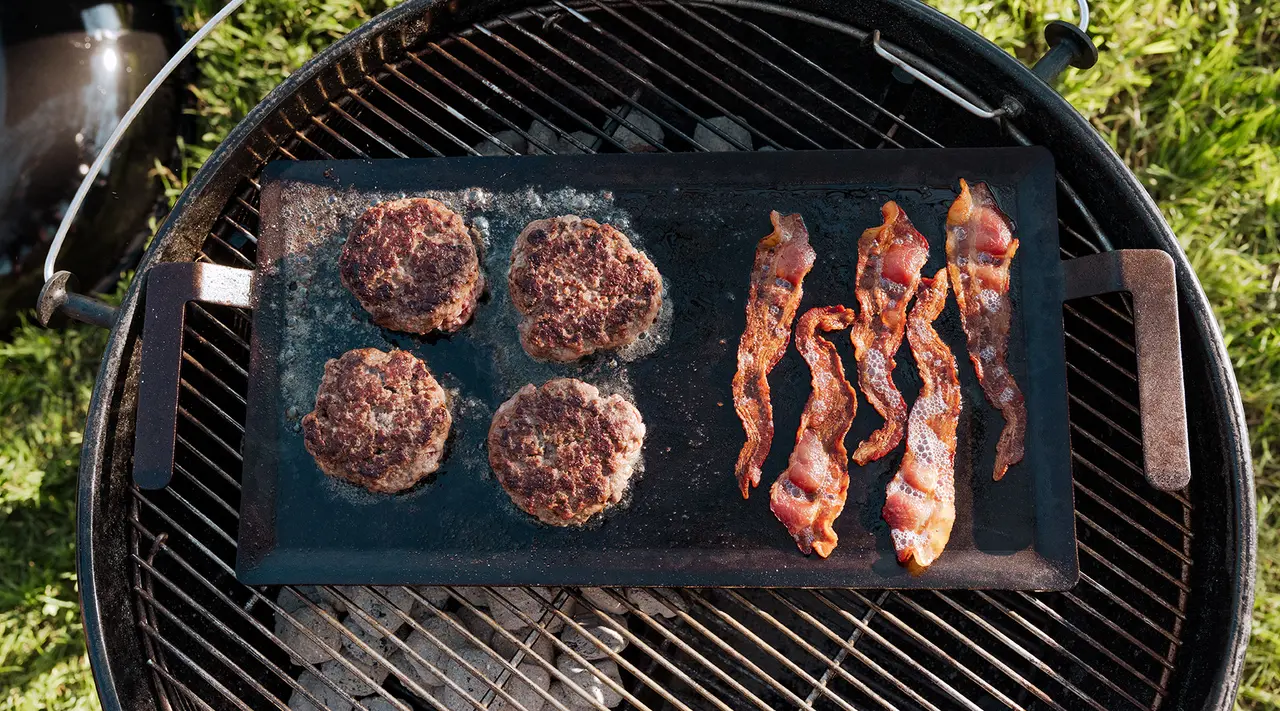
Since carbon steel is lightweight yet can handle high temperatures, you can and should use it on a grill and even over an open flame. To really hone in on that flame-kissed taste, try our Carbon Steel Grill Frying Pan, with 62 perforations on the bottom that allow direct flame contact and enhance your foods with a smoky flavor. This pan is great for all sorts of proteins, but also makes it easy to grill vegetables—and more delicate foods like fish—without worrying about losing anything beneath the grill grates.
The super versatile Carbon Steel Frying Pan also performs well for outdoor cooking, letting you cook foods that you don’t want to lose juices from—a butter-based steak, for example—as well as saucier dishes over a grill or fire.
And if you’ve ever dreamt of campfire breakfasts with fire-toasted muffins and fried eggs, look no further than our Carbon Steel Griddle. With its large cooking surface and slightly sloped sides, the Griddle is ideal for bulk cooking for multiple people. And as with all of our carbon steel cookware, the Griddle’s heat retention means food will cook at a reasonable rate, even over an open fire.
Regardless of what pan you reach for, we’ve got you covered for the summer season—check out our selection of grilling recipes for more grilling inspiration.
Searing
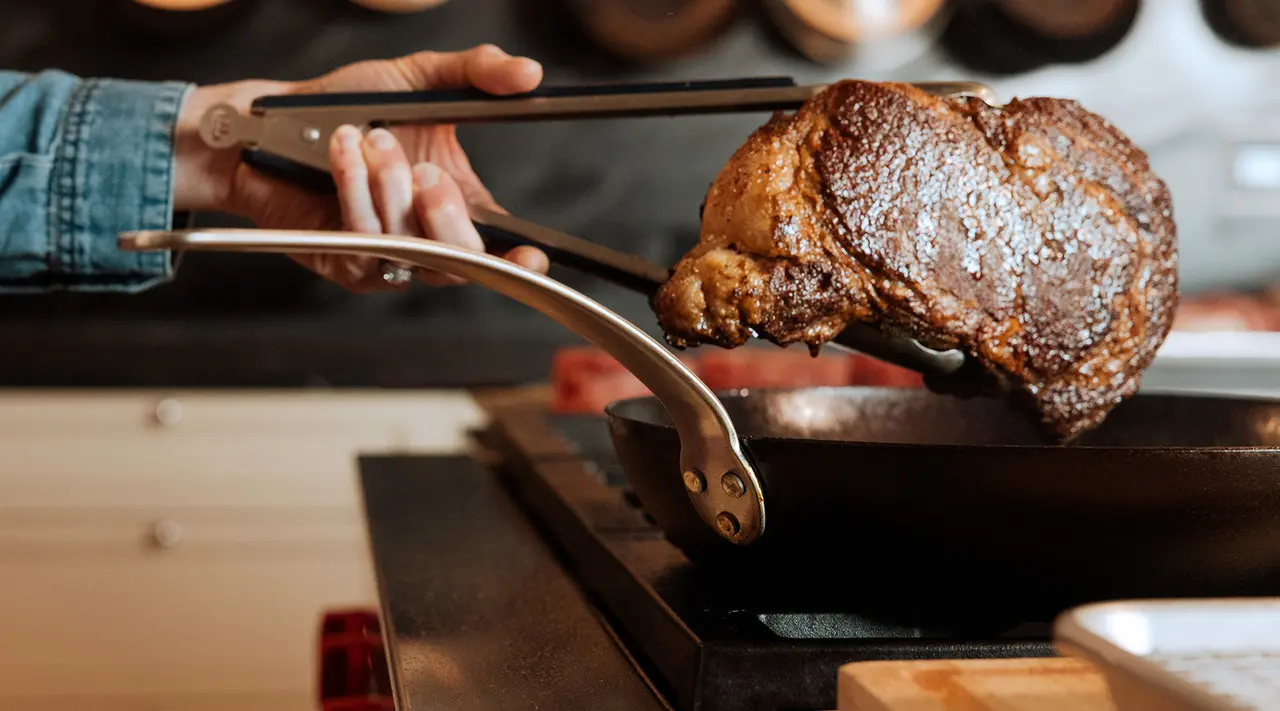
As mentioned above, carbon steel offers superior heat responsiveness. This is especially important when searing proteins, from skin-on chicken thighs to fancy mushrooms. Cooking with carbon steel allows you to form a nice crust over higher heat and then drop the temperature down to finish cooking. And if you’re adding something like butter to make a pan sauce, you won’t have to worry about the sauce burning.
One important note: since carbon steel contains a small amount of iron, the material is reactive and acidic ingredients—like tomatoes, vinegar, wine, and citrus—should be avoided, as acid can strip the seasoning. But if you do accidentally add something acidic, it’s not the end of the world—you’ll just need to reseason your skillet when you’re done cooking.
Sautéing
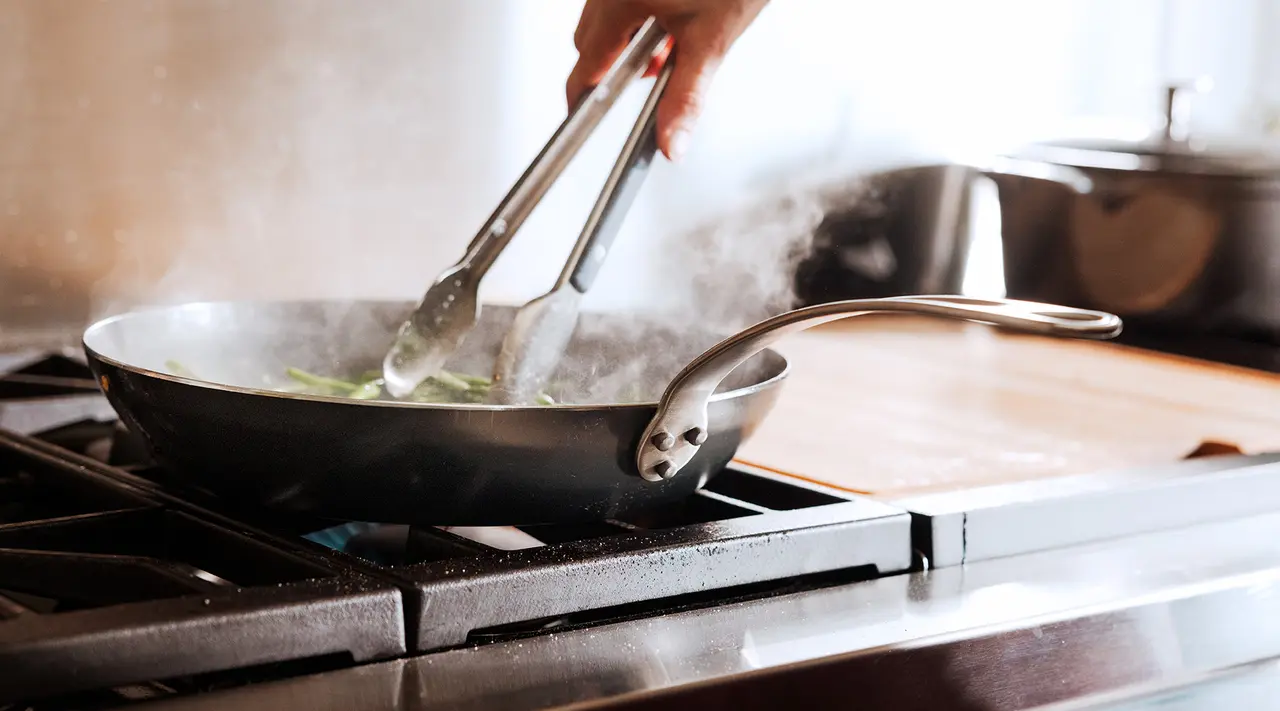
Given carbon steel’s excellent heat distribution, it’s also the ideal cookware for sautéing. First, bring your ingredients out of the refrigerator so they lose some of their chill—cold food is more prone to stick, and, though unlikely, it can also risk thermal shock, which can warp carbon steel.
Next, preheat your pan over medium-low heat for a few minutes before adding your cooking fat. Let the fat warm up for a few more minutes, then add your food. Take care not to overcrowd your ingredients, or they’ll simply steam rather than sauté. As your food cooks, stir a few times, but not too much. This will help your food cook more quickly—more time in contact with the skillet—and also develop a little color. Be aware that carbon steel responds to heat much faster than thicker pans, so it will heat up (and likewise respond to cranking the heat up or down) quickly.
Care and Maintenance
Cleaning up is part of cooking, and with carbon steel, there are a few things to know before you dive in. We’ve written a whole guide on cleaning carbon steel, ranging from easy messes to stuck-on grit.
When cleaning, avoid abrasive material like steel wool. Once clean, always dry your cookware right away. You can even set it over medium-low heat for a few minutes to make sure any excess water is evaporated off. Once dry, apply a tiny amount of high smoke point oil with a clean towel, buffing it in until the surface is shiny.
Once your carbon steel cookware is clean, be sure to dry it off completely before storing. If you’re stacking other pans on top, put a clean dish towel or non-scratching trivet, like a Pan Protector, in between. And of course, though it’s a friend of the outdoors, never keep your skillet outside, where it will be exposed to elements and humidity and eventually rust.
Seasoning Your Carbon Steel Pan
Keeping your carbon steel pan’s seasoning in check will ensure it retains its non stick properties. The work upfront will depend on whether you’ve bought preseasoned or unseasoned carbon steel.
Preseasoned, as implied by the name, can be used right away. Our Seasoned Carbon Steel Frying Pan, for example, comes with two layers of seasoning already applied at our Swedish factory—so if you’re stressed about seasoning, this is a good choice for you.
Our Unseasoned Carbon Steel Frying Pan, however, needs to be fully seasoned before you dive into your first cook. Either way, you’ll want to read our guide on seasoning carbon steel cookware to fully understand how to protect your pans and griddles.
Once your carbon steel cookware has a nice layer of seasoning, you can take a few steps to maintain it to reduce the need to reseason. Avoid acidic foods, first and foremost. But do cook lots of fatty foods, especially when your skillet is new. Things like burgers and bacon, or even a little shallow frying of latkes or homemade tortilla chips, will help build up layers of seasoning.
With a little attention to care and maintenance, your carbon steel cookware will stay in great shape for years.
Ready to Cook?
Carbon steel cookware can require a bit of adjustment, but once you’re comfortable cooking with carbon steel, you’ll quickly realize how versatile it can be. Browse our selection of chef-loved Carbon Steel Frying Pans, Griddles, and Woks to see all the opportunities that await.
